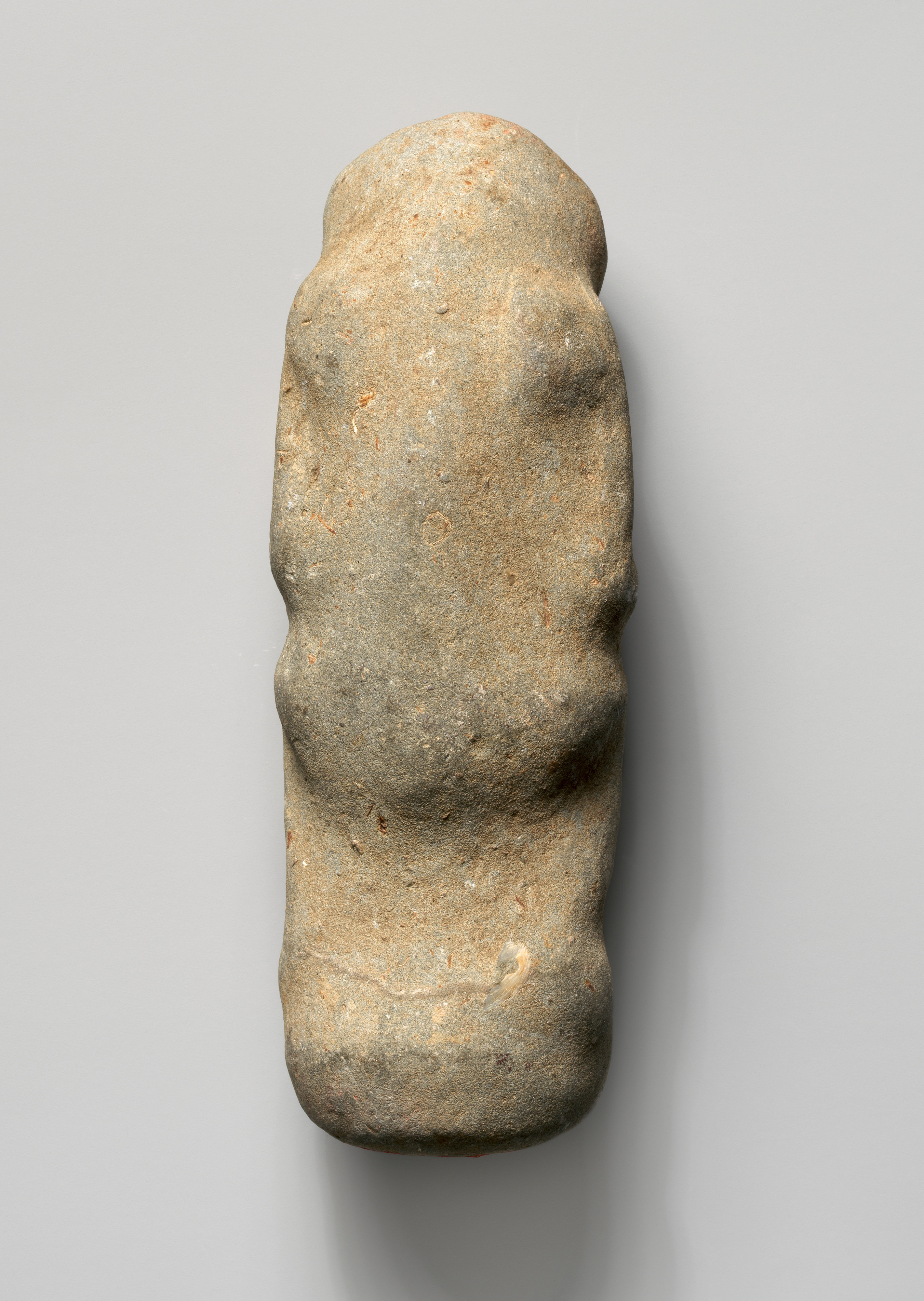Figure Pestle
Not on view
This zemí image was likely used as a grinding implement in ceremonies performed at prescribed times throughout the year involving a vegetal entheogen known as cohoba. A ground up hallucinogenic powder or paste would be placed on a surface, and ceremonial participants would grind the cohoba into a powder to be inhaled through snuff tubes. Creative sculptural expression for the Taíno peoples was intertwined with spirituality, ceremony, and political power. Spanish accounts describe how zemí figures were used as stands, reliquaries, or personal adornment. Zemícemí) is a term used by Taíno peoples, the diverse societies that inhabited the Antilles archipelago before European contact, that linguistically relates to a quality akin to sweetness. Zemí refers not to an object or image but to an immaterial, spiritual, and vital force pertaining to deities and ancestors. There are several known zemí identities recorded by the Spanish, some of which have been linked to archaeological images.
Due to rights restrictions, this image cannot be enlarged, viewed at full screen, or downloaded.
This artwork is meant to be viewed from right to left. Scroll left to view more.



